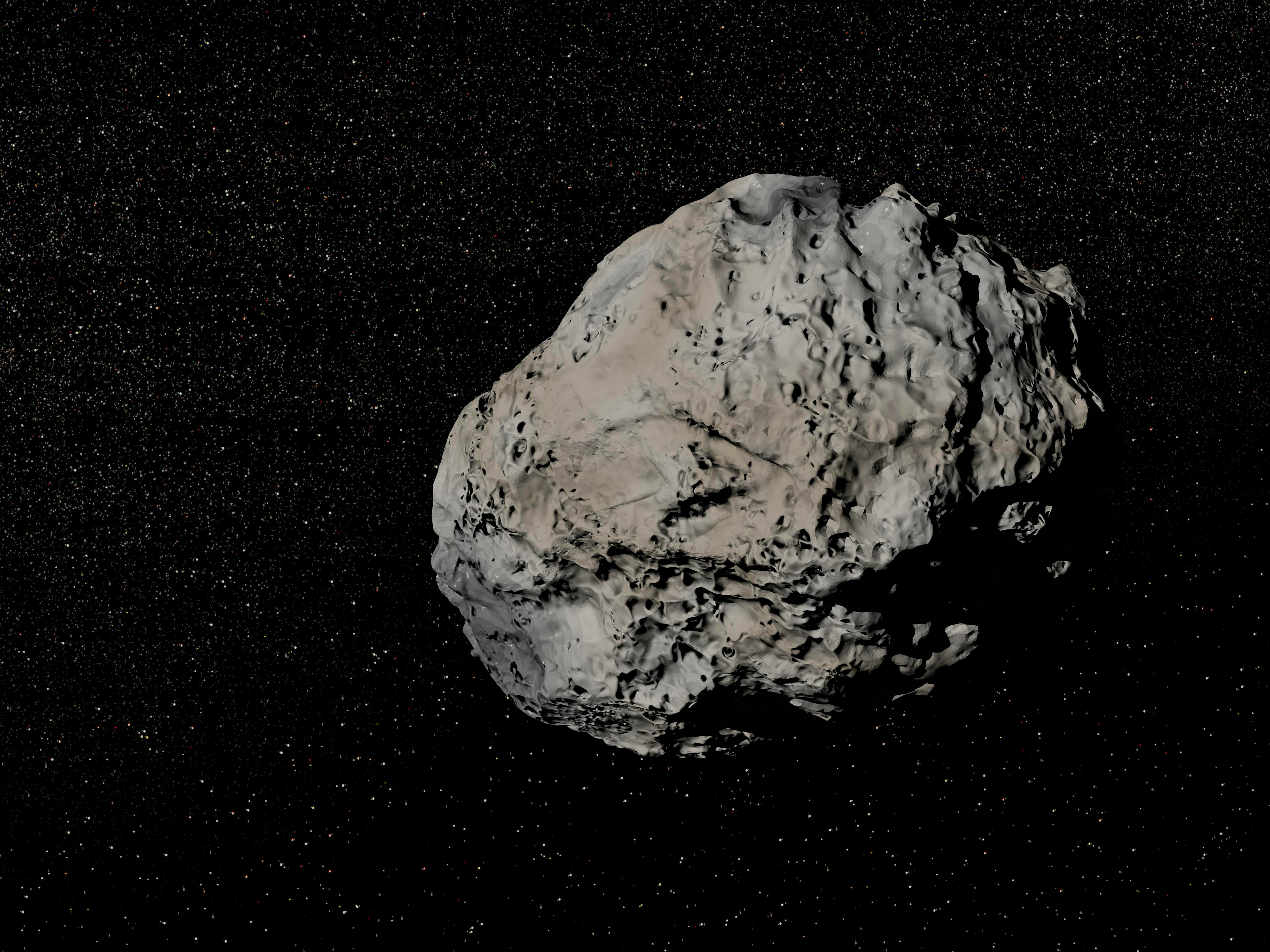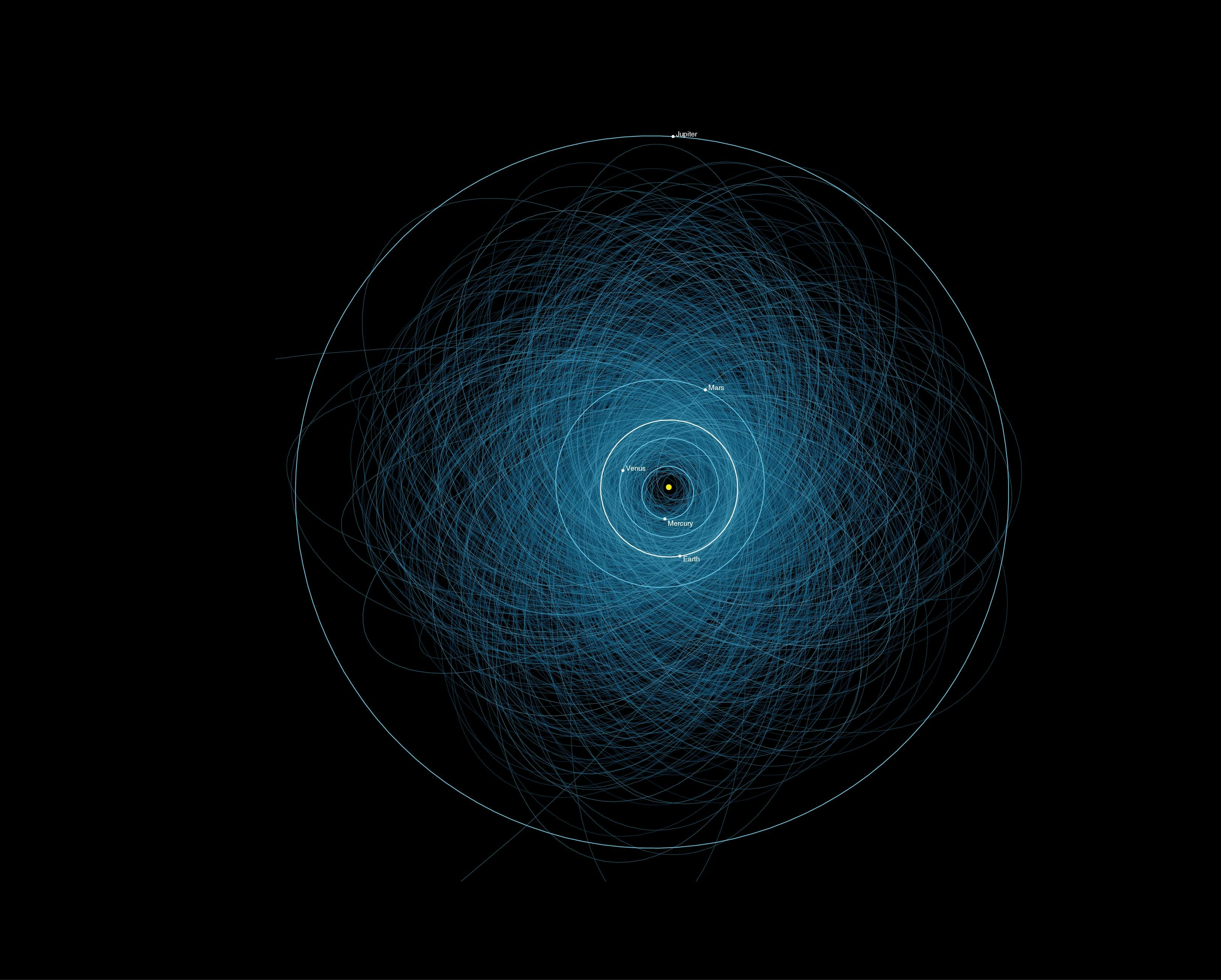
A Mount Everest-sized asteroid that swept by Earth in 1989 will be coming back around for a much closer visit at the end of May.
The asteroid — 1989 JA — was discovered on May 1, 1989, by Eleanor Helin at Palomar Observatory. 1989 JA came close to Earth but was not considered hazardous at the time.
This time will be a different story, as asteroid 1989 JA will be close enough to be considered potentially hazardous, and even be visible with a small telescope from Earth. But don’t worry — it’ll be about 2.5 million miles away from Earth when it swings by on May 27.
The large space rock will also cross over Earth’s orbital path on its journey — passing behind our planet as it continues its journey around the Sun.
1989 JA size and closest approach to Earth
1989 JA has a 861-day orbit around the Sun. That causes the asteroid to return to Earth’s neighborhood at irregular intervals — sometimes a few years apart, other times a couple decades. Current estimates place the asteroid as coming within 2.5 million miles of Earth – around 10 times the distance to the moon from Earth.
The previous closest encounter with the asteroid was 3.4 million miles in 1949, according to NASA’s Jet Propulsion Laboratory data. May’s encounter with the asteroid will be the closest approach for at least the next two centuries.
Due to the fact that 1989 JA will cross Earth’s orbit and take longer than an Earth year to orbit the sun (861 years), it is classified as an Apollo asteroid.

What is a potentially hazardous asteroid?
Asteroid 1989 JA might not be a major cause for concern, yet it still is categorized as a potentially hazardous asteroid. Scientists refer to asteroids as potentially hazardous when they travel within 4.6 million miles or less and are larger than 140 m (~500 ft) in diameter. An object that size has the potential to cause great damage to our planet. If an object is much smaller and happens to encounter Earth, it will mostly burn up in the atmosphere and cause no major threat.
According to NASA, there is not a high threat to the planet until 2186, when asteroid 2009 FD will pass by. Even though significant, the chance of impact is still only .2 percent. There is little need to lose sleep anytime soon over hearing of potentially hazardous asteroids.
Should I be worried about 1989 JA?
The asteroid 1989 JA should slip safely past Earth on its travels around the sun. In fact, it is only one of the numerous near-Earth Asteroids (NEA) that NASA and others have been keeping an eye on. NASA and other agencies and observatories are constantly tracking NEAs as part of planetary defense initiatives.
A near-Earth object, 2006 FJ42, estimated to be a diameter of between 380 m and 860 m, came within 2.7 million miles of Earth last year. Asteroid 2022 GN1 also flew safely past Earth last month, coming within 79,000 miles. These passes happen frequently, yet have a low chance of impacting our planet. Astronomers are also aware of most large-sized objects that might encounter Earth, while future observatories should help them find smaller ones.

What are the largest near-Earth asteroids?
There are currently more than 870 near-Earth asteroids (NEAs). There are still many to be discovered, with many factors such as visibility and location making it difficult to detect some NEAs. Of those asteroids, a few are have given us a bit of a scare:
- The largest asteroid scientists have discovered so far is 1036 Ganymed, which is 25.5 miles in diameter. Luckily, this city-sized asteroid has little chance of approaching Earth in our lifetime.
- NASA is investigating the asteroid Bennu, which has a slight chance of impacting Earth in the late 2100s.
- A recent extremely close encounter happened in 2008 when an asteroid came within 4000 miles of Earth.
- As for accounts of actual Earth impacts, there is a record of an asteroid or comet 330 feet in diameter breaking apart over remote Siberia in 1908. A 66-foot meteor also exploded over Chelyabinsk, Russia in 2013, causing more than 1,000 injuries.
When will 1989 JA return to Earth?
After it safely passes by Earth in May 2022, 1989 JA will return in the coming years. According to NASA/JPL data, in 2029 and 2048 the asteroid will fly by much further away – more than 24 million miles. Two more passes will be made — in 2055 and 2062 — before 1989 JA comes as close as it was when first discovered. Though it will not come as close as this current pass, a closer approach will be made again in 2081, when 1989 JA comes within 7 million miles of Earth.







